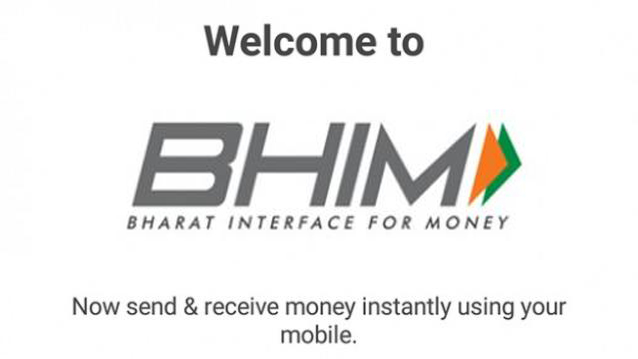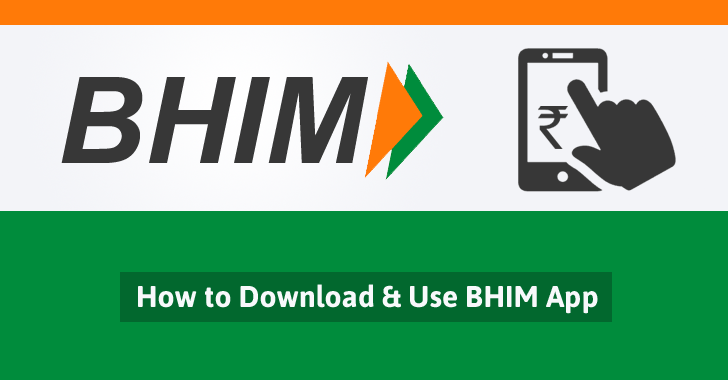BHIM app crossed ‘1 Crores’ download in ten days of its launch. Let’s see features of the app.

Eyeing promoting digital and cashless payments, the app launched by Prime Minister Narendra Modi – Bharat Interface for Mobile or BHIM has got more than 10 million (one crore) downloads on Google’s Playstore within ten days of its launch. Post demonetization when country struggle for currency notes throughout the country, BHIM app has given a sooth to people who were struggling with monetary issues. In a statement PM Modi expressed pleasure to know about downloads of BHIM app in such huge number.

Three days within its launch, the BHIM app became the most popular Android application in India. It topped the charts on Google’s Play Store in the country with a rating of 4.1. The app is based on the Unified Payment Interface (UPI), common across all banks and financial institutions.
BHIM app has been launched to empower the poorest of the poor. It is for the small merchant, farmers in far-flung areas, tribals. That’s why its name has been borrowed from the man who sacrificed his life for the downtrodden. BHIM aims to promote digital transactions and tackle the various stumbling blocks, like payment to service providers, in country’s way to become a cashless economy.
Here’s all you need to know about the app that takes on Paytm, Freecharge and other e-wallet apps. The app is a rebranded version of UPI (Unified Payment Interface) and USSD (Unstructured Supplementary Service Data). As UPI is built on top of Immediate Payment Service (IMPS), this means transactions that you will do on BHIM app will take only seconds.
The app has been developed by National Payments Corporation of India (NPCI). To download the app, much data isn’t required as the app size is as low as 2 MB. Maximum transaction limit in as day is Rs. 20000. As for limits, users can transfer as low as Re 1 and a maximum of Rs 20,000 per day. However, there’s a cap of Rs 10,000 for a single transaction.

BHIM app is currently only available for Android (version 4.1.1 and above). However, the official website claims that the app will be made available on other mobile platforms (including iOS) soon.
Can link only one bank account – Currently, BHIM supports linking of one bank account only. At the time of account set-up, you can link your preferred bank account as the default account. In case you want to link another bank account, you can go to Main menu, choose bank accounts and select your default account. Any money that is transferred to you using your mobile number or payment address will be credited into your default account.
How it works – Once downloaded, users need to register his/her bank account details and set up a UPI Pin. The user’s mobile number becomes the payment address. Once registered, you are all set to get going. To set UPI PIN, go to Main Menu -Bank Accounts -Set UPI-PIN for the selected account. You will be prompted to enter the last 6 digits of your Debit/ATM card along with the expiry date. You will then receive an OTP which you will enter and set your UPI PIN.
Need to register debit card details – At the time of registration you will be providing us with the debit card details and with the use your mobile number registered to your bank account, we will pre-fetch the details from your bank. Government claims that all the information exchange happens over secure banking networks and no information whatsoever is stored.
Saves on fee payment to card companies – The app helps eliminate the fee payments to service providers like card companies such as Mastercard or Visa, which has been a big stumbling block in adoption of cashless paymemts by merchants.
e-wallet app BHIM – Important things to know –
- Rebranded version of UPI and USSD
- Developed by NPCI2MB in size
- Maximum transaction limit is Rs 20,000 per day
- Available for download on Google Play store
- Can link only one bank account
- Need to register debit card details
- Saves on fee payment to card companies
The app doesn’t require an internet connection and can work on simple feature phones. Aadhaar-based payments are expected to be added to the app in the coming weeks. The all-new BHIM app aims to enable people to send and receive money through their mobile phones by linking their bank accounts. It will also work on feature phones through the upgraded USSD (Unstructured Supplementary Service Data) platform.
The app comes with features such as the ability to send and receive money, linking accounts, saving user profiles, changing languages, recording beneficiary details and providing balance enquiry. Banks, which currently have individual UPI apps, can reportedly either endorse the common app or allow customers to use in-house apps that may be loaded with more features.
However, unlike e-wallets like Paytm, Freecharge and others, the app allows users to send money to even non-UPI accounts or IDs; users can do so by sending money via IFSC and MMID codes. Users will also be able to utilize QR codes for payments.
The list of banks supporting BHIM app includes –
Allahabad Bank, Andhra Bank, Axis Bank, Bank of Baroda, Bank of Maharashtra, Canara Bank, Catholic Syrian Bank, Central Bank of India, DCB Bank, Dena Bank, Federal Bank, HDFC Bank, ICICI Bank, IDBI Bank, IDFC Bank, Indian Bank, Indian Overseas Bank, IndusInd Bank, Karnataka Bank, Karur Vysya Bank, Kotak Mahindra Bank, Oriental Bank of Commerce, Punjab National Bank, RBL Bank, South Indian Bank, Standard Chartered Bank, State Bank of India, Syndicate Bank, Union Bank of India, United Bank of India, and Vijaya Bank.

 Currency Convertor
Currency Convertor Post an article
Post an article Covid19 Updates
Covid19 Updates eLive Today.
eLive Today.


 sending...
sending...




